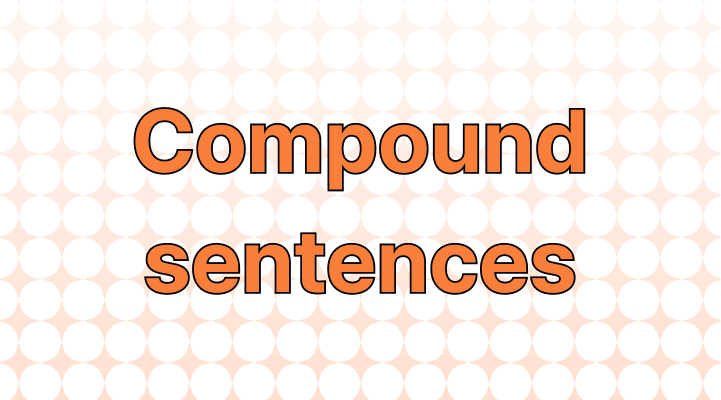A compound sentence is "I went to the store, and I bought an apple" where two or more independent clauses are joined by coordinating conjunctions like "and," "but," or "or."
Independent clauses are parts of the sentence that can stand alone as sentences on their own. The sentence above can be broken down into two sentences:
- I went to the store.
- I bought an apple.

Compound sentences explained
A compound sentence is a fundamental structure in English grammar that consists of two or more independent clauses joined together by coordinating conjunctions. These conjunctions include "and," "but," "or," "for," "nor," "so," and "yet." When constructing compound sentences, it's important to understand how these conjunctions work to connect related ideas while maintaining grammatical coherence.
Consider the following example sentences to illustrate the concept of compound sentences. The coordinating conjunctions are in bold.
- She likes to read books, and he prefers to watch movies.
- The weather was hot, so we went swimming at the beach.
- I want to travel the world, but I need to save money first.
- He studied hard for the exam, yet he still failed to pass.
- They were hungry, so they decided to order pizza for dinner.
- She wanted to go to the party, but her parents wouldn't allow it.
- The cat climbed up the tree, and the dog chased after it.
- He is allergic to peanuts, so he avoids eating anything that contains them.
- She loves to dance, yet she has never taken a dance class.
- They can choose to walk to the park, or they can ride their bikes.
In each of these sentences, the coordinating conjunctions (such as "and," "but," "so," etc.) join two independent clauses to form a compound sentence. These conjunctions help to connect related ideas or actions within the sentence, creating a cohesive structure.
The comma
Notice how there is always a comma before the coordinating conjunction which denotes that two independent clauses are being separated. When separating two dependent clauses with a conjunction, the comma should be omitted although some writers add a comma for special emphasis in more rare cases.
List of coordinating conjuctions
Coordinating conjunctions serve as the glue that holds compound sentences together. Here is a list of common coordinating conjunctions used for compound sentences:
- And
- But
- Or
- For
- Nor
- So
- Yet
An easy and common acronym that can help you remember the coordinating conjunctions is FANBOYS (for, and, nor, but, or, yet, so).
How to use each coordinating conjunction
Understanding how to use these conjunctions effectively allows writers to create clear and concise compound sentences. Whether expressing contrasting ideas with "but," presenting additional information with "and," or indicating cause and effect with "so," coordinating conjunctions play a crucial role in forming compound sentences.
And: Used to add similar or related information.
She loves to read books, and she enjoys watching movies.
But: Used to contrast or present opposing ideas.
He studied hard for the exam, but he still failed to pass.
Or: Used to present alternatives or options.
You can choose to walk to the park, or you can ride your bike.
For: Used to explain reason or purpose.
She was feeling tired, for she had been working all day.
Nor: Used to present negative alternatives or to indicate that something is not true.
He neither studied for the exam, nor did he ask for help.
So: Used to indicate cause and effect or to express result or consequence.
It was raining outside, so we decided to stay indoors.
Yet: Used to present contrast or to indicate unexpected or surprising information.
She loves chocolate, yet she rarely eats it because she's on a diet.
Compound sentences provide variety and complexity to writing by allowing writers to express multiple ideas within a single sentence. By mastering the use of coordinating conjunctions and understanding how to structure compound sentences, writers can enhance the clarity and effectiveness of their communication.
In conclusion, compound sentences are a vital component of English grammar, offering a versatile way to convey multiple ideas in a single sentence. Through the use of coordinating conjunctions, writers can connect independent clauses and create compound sentences that are both grammatically correct and rhetorically impactful.

Want to sound like a native speaker?
Engram’s AI-powered grammar checker makes your English sound like a native speaker’s, suggesting natural English expressions on top of fixing grammar, spelling, punctuation, word order, and vocabulary.














